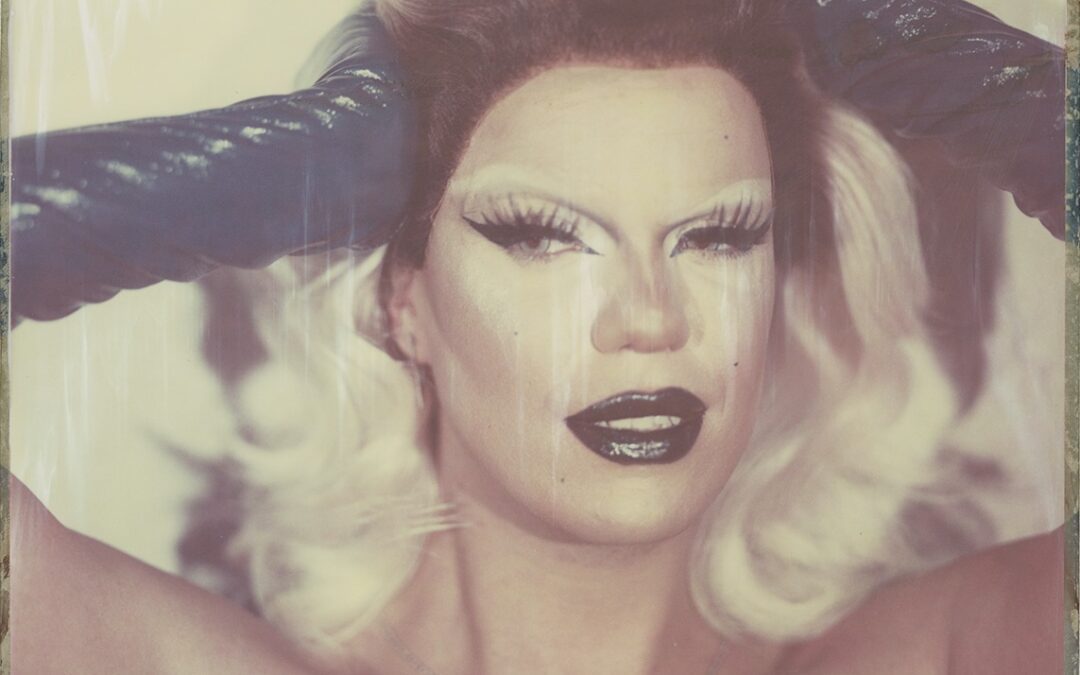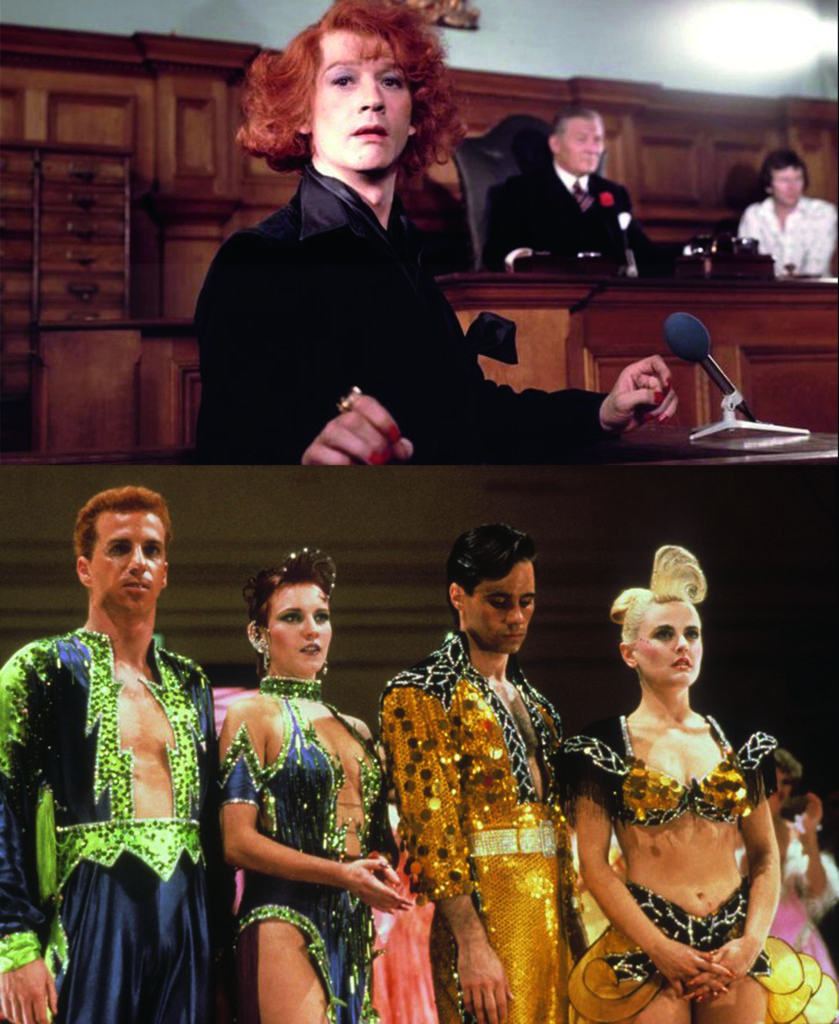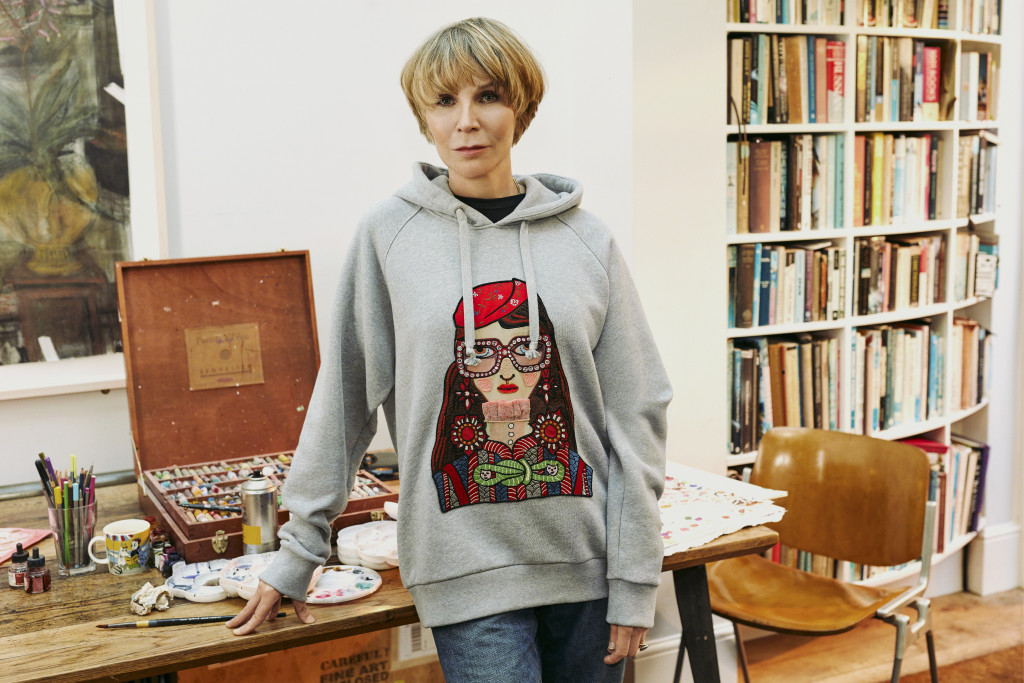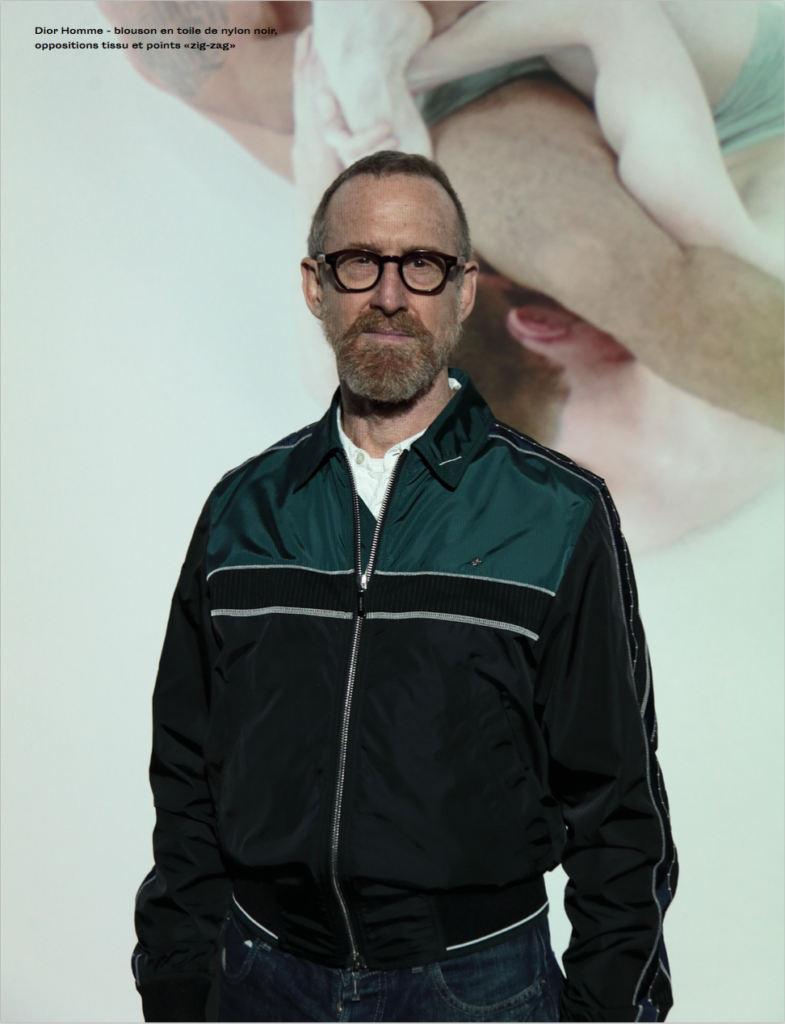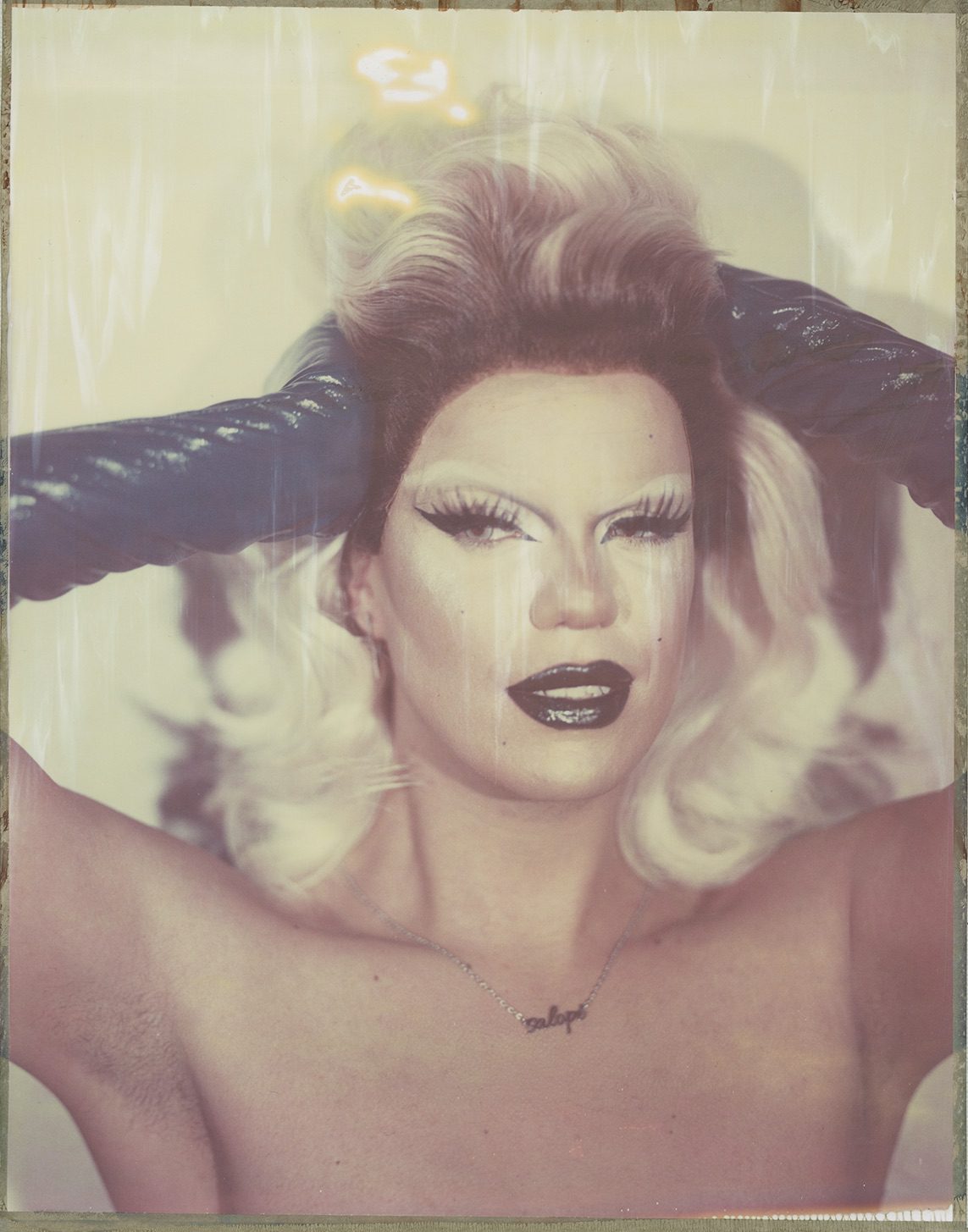
Photo by Cameron Postforoosh
AN INTERVIEW WITH NICKY DOLL
By Alice Butterlin
The first French drag queen to appear on the immensely popular American TV show, RuPaul’s Drag Race, Nicky Doll mesmerized audiences in 2019 with looks inspired by Haute Couture Classics, an affinity for Japanese anime and her dry sense of humor. Now the host and judge on Drag Race France, which premiered its first season on June 25,2022, discover this exclusive interview and photoshoot of Nicky Doll for Crash 93.
How did you start doing drag?
I was enrolled in a communications program at university and I was doing drag on the side. That’s when I realized how much make-up had helped me accept myself and discover the different facets of my personality. So much so that I thought it would be smart to switch my career to make-up. So I started with drag, which led me to makeup.
How old were you at the time?
I was 19 and in the second year of my bachelor’s program in Information and Communication at University of Paris 8.
What were the spots in Paris where you got your start as a drag queen?
My first night as a drag queen happened at Le Velvet, a bar on rue Saint-Honoré in Paris, where I worked as a bartender to pay my bills and rent when I was a student. Then there were the huge Club Sandwich parties, which were like the den of all creatures. They had a specific theme each month and we always looked forward to them. The whole community was invested in trying to create the boldest possible looks because you could win prizes. That’s how I learned to diversify my looks and experiment with my drag identity.
Did you meet people in nightlife at the time who became important to you?
Yes, I had the pleasure of working with Marc Zaffuto and Emmanuel d’Orazio, two iconic figures of the Parisian scene. I also worked at Queen, which has since unfortunately closed. That was my first paid show in 2011. I was dressed as Princess Peach from Mario and the theme was « Princesses & Monsters ». Since there is no set path in the drag scene, you have to turn yourself into your « portfolio » by creating looks that inspire people, while hoping to inspire a promoter who might hire you for a project. At first I was just doing it for myself, and then I started getting paid to do it. I did that until 2015, when I decided to leave France for the United States.
Since starting in 2009, have you already felt the influence of RuPaul and her show on the Parisian scene?
The funny thing is that I started dragging before I even knew anything about RuPaul. The show started in 2009 but I didn’t hear about it until 2013. When I started in France, it was still very fragmented. There were the cross-dressers who worked in cabaret – a very different and specific type of drag – and gorgeous trans women performing with gogo dancers. At first, most people thought I was on hormones and that I was transitioning, when in fact I wasn’t at all. I had to educate people by explaining that I had created a character for myself. I wasn’t Dalida or Celine Dion or Britney, just Nicky Doll. It was when I discovered RuPaul’s Drag Race through my American boyfriend at the time that I realized that what I was doing had a name, beyond the manga creature I had created. I was a drag queen and a community was waiting for me, with codes to respect. That’s how I fell headfirst down the rabbit hole!
How did you create the Nicky Doll character?
Nicky Doll is a character who is always changing and who brings out a lot of elements from my past, whether positive or negative. My aesthetic references remain the top models of the 1990s, but also the anime I watched when I was younger. The bad girls in manga inspired Nicky Doll’s face. That’s why people think I’m bad when it’s just the liner and the gray contacts that give me that look. (laughs) But there’s also this very feminine side that I wanted to express because I was constantly being bullied in my teenage years, whether it was in the Caribbean or Morocco, because of my difference or my femininity. So I needed to create a character that went to the extreme end of the spectrum of what I was supposed to be in society, which is very binary. Nicky Doll was born and continues to evolve based on what I’m discovering and learning in life. It’s similar to the relationships musicians have with their albums. Every album is different, and in the same way, every phase of Nicky Doll is different.
Do you ever look at pictures of your early drag days?
I try not to look at them. (laughs) Before I came up with the name Nicky Doll, my character was called Megan because I wanted to look like Megan Fox. Then I realized it wasn’t possible. I didn’t even think about Angelina Jolie because that was even worse. So I decided to create a character from scratch. I needed a name that was easy to remember and I wanted a doll’s face with a very unusual look, a little dark, Mugleresque… And at the same time very Japanese. You find out in RuPaul’s Drag Race that I named myself Nicky after Nicki Minaj. She had had this Barbz period with her song « Superbass » and all her hyper-neon looks that really inspired me at the beginning. What’s interesting about Nicki Minaj is that even though she’s a rap artist, she had to compete with pop monsters in her early days. She had to adopt a more pop style and then bring the audience into her own world. I think that’s what I did with my drag, too. I started with very recognizable looks that are accessible to everyone – the little Barbie from Miami – before going back to my roots and embracing the French touch as much as possible… Which works well in the US! (laughs)
Has fashion interested you for a long time? It seems like it’s an integral part of your character.
The relationship between drag queens and fashion – no matter what kind of drag you are – is always very strong. We get it from the ballroom culture where we had few resources and were never invited into the upper echelons of fashion. We used to create our own little den where we could shine. What’s funny is that drag originally used references from fashion, and now fashion is using references from drag. We’ve finally managed to make a mark on the world, so much so that the high society we never managed to reach is now coming to us. Since I always dreamed of putting makeup on top models before I ever had the chance, I created my own top model for my character whom I made up for free every night. I get a lot of inspiration from Gaultier, Mugler, Galliano and other designers of the 1990s. That was my escape when I wasn’t openly gay yet.
As you said, drag is slowly starting to infiltrate the more mainstream fashion scene, both in the audience and on the catwalk. Have you been able to attend any fashion shows recently?
In February 2020, I had the chance to attend the Giambattista Valli fashion show, a house I never thought I’d have access to. Miss Fame, another drag queen, was also invited. This season (Sept 2020), I had the chance to attend the Isabel Marant and Ami shows. Not only did I have the chance to sit in the front row and discover the collection in real life, but I was also welcomed with a lot of enthusiasm and generosity. It feels like there has been a shift in social mores and the relationship between us and fashion people. I’m realizing that people have a lot of respect for our mode of expression. There was a time when drag was seen as a sexual perversion, whereas my character is not sexualized at all. I could be dressed as Ronald McDonald or some incredible creature and it wouldn’t make any difference. I’m just like Barbie, I have no sex parts. (laughs) There have always been brands that have supported my community – Gaultier, Mugler – and have pushed the boundaries of gender. But I never thought I would be able to walk into the show of a very classic brand like Isabel Marant dressed in the classic Parisian woman’s wardrobe as a man with a corset and a wig. It was a great honor and I was delighted to see that the customs have changed in France.
And now you’ve just appeared on the Daphne Burki show, a symbol that would have been poorly received even five years ago.
And on top of that, I was received with a lot of enthusiasm, respect and pride. Laurence Boccolini was there. I grew up watching the French version of the Weakest Link. She’s a diehard RuPaul fan and wants to be the French RuPaul at all costs if they do a French version of the show. Two worlds are colliding. The people I watched on the small screen in my childhood now have a positive view of me, even in public. That’s the real breakthrough and victory. People are no longer afraid to express their tastes and change their mentalities. I was lucky enough to be invited to tell my story on the show Quotidien, which is watched by many people in France. I got messages on Instagram from mothers and grandmothers who said I had changed their view of drag and helped them accept their sons. Taking part in such a huge show in the United States is one thing, but it was really important ot me to reach people in France. It’s still my culture, my country and « my people ».
Quotidien is your first big appearance on French TV. How did you deal with all the pressure?
The most stressful part for me was becoming overnight the most followed drag queen in France and the spokesperson for an entire community that was bullied and misunderstood. I wanted to make sure that I chose my words carefully and managed to connect with the French public without visually shocking them. That’s why I chose a very particular look for Quotidien. The strength of my drag is that I can create an illusion that allows me to soften up the straight community, not to push them too hard, but to gently urge them to accept me. I like to blur the lines to achieve my goals. And I think I managed to do that on the show because people stopped and listened to what I had to say instead of being visually assaulted by looking too eccentric or too queer for an audience that is still uninformed on the issue. In any case, it was a great success.
A lot of French people discovered you that night and were eager to learn more about your story on RuPaul’s Drag Race. Can you tell us more about this experience?
I moved to the United States because I needed a challenge. I was successful at everything I did. I was a make-up artist with a lot of work in Paris, a drag queen who worked all over France and Europe… I needed to reach a higher level and face a new audience. During the first three years of my life in the United States, I tried to carve out a place for myself and find financial stability as a freelance make-up artist. On top of that, drag performance in France has little in common with the United States. In France we are more visual performers. We do drag gogo with a DJ set and dancers. In the United States it was all lip syncing in bars at ten o’clock in the evening – and not at two in the morning. So I had to adapt. There were a lot of things I didn’t know. During my second year in New York, I really decided to challenge myself and I was curious about the auditions for RuPaul’s Drag Race. It was a Thursday night, it was raining, and it must have been midnight. I went to the show’s website after they announced that the auditions were open, and after an hour of filling out a questionnaire, I got to the submit button. I almost clicked on « cancel » and then I finally went ahead and submitted it. I got a call the very next day. Then there was the second step, third step, etc. until I was booked and had three weeks to get ready for shooting in Los Angeles.
So the selection process moves fairly quickly.
It still takes from February to July, with a lot of waiting, silence and stress. From the moment you get the call, it’s a race against time to get everything together before you get on the plane. But I feel very lucky because there are drag queens like Nina West who have been applying non-stop since the very first season. I only applied once and I got in right away. Was it a poisoned apple? A stroke of luck? In any case I was taken by surprise and didn’t know what to expect. You might be a fan of the show and watch it every season, but there’s an ocean of difference between watching it and appearing on it. I learned that the hard way. (laughs)
When I talk about it with people, I’ve noticed that the ones who don’t like the show say its too fake and made up. What is it really like?
To be honest, that’s what I thought, too. And that’s what puts even more pressure on you. But after watching my own season, I realized that the production is just there to reinforce feelings that are already there, to exaggerate reality in a way. Even though there’s a lot of editing, it’s not as sneaky as you might think. What I loved is that even behind the cameras, it’s mostly queer people, women and men of all colors and from different backgrounds. You can feel that we’re all there to create a great show and inspire the world, by showcasing people we are not used to seeing. So it’s still a great experience.
It is no secret that French and American people do not operate in the same way. Was it hard to be fully yourself while following the codes of American television?
It is difficult. Even if you like American productions, when you’re on these kinds of shows – especially when you’re being pushed to the limit – your instincts come back to you. And the French instinct is very different from the American instinct. It’s hard to take a step back at times like that. You rely on what you know, your comfort zone. French people, in general, are much more reserved and polite. They don’t put themselves out there as easily and have a harder time stepping on other people to get their way. Americans have a saying: « fake it ’til you make it ». For them, there is no shame in doing whatever it takes to succeed. And even though I think I speak English pretty well, it was hard to be funny on command and have the same references. When I yelled out « bitch » and created my baby character, I was thinking of Amélie yelling at Senna on Secret Story when I was eighteen. (laughs) But that doesn’t mean anything to an American. So discovering the vision Americans have of French people… You know, Pepe Le Pew? Americans grew up with that character. They’re convinced that all French people are like that, that they say « sacre bleu » in every sentence, because of Lumière in Beauty and the Beast. So that meant that when I got there, I had to deal with a very narrow image of French people. But I think I’ve changed it, so it was a success. And there’s always All Stars, I don’t know… (laughs).
Read the rest of the interview in Crash 93 available HERE.
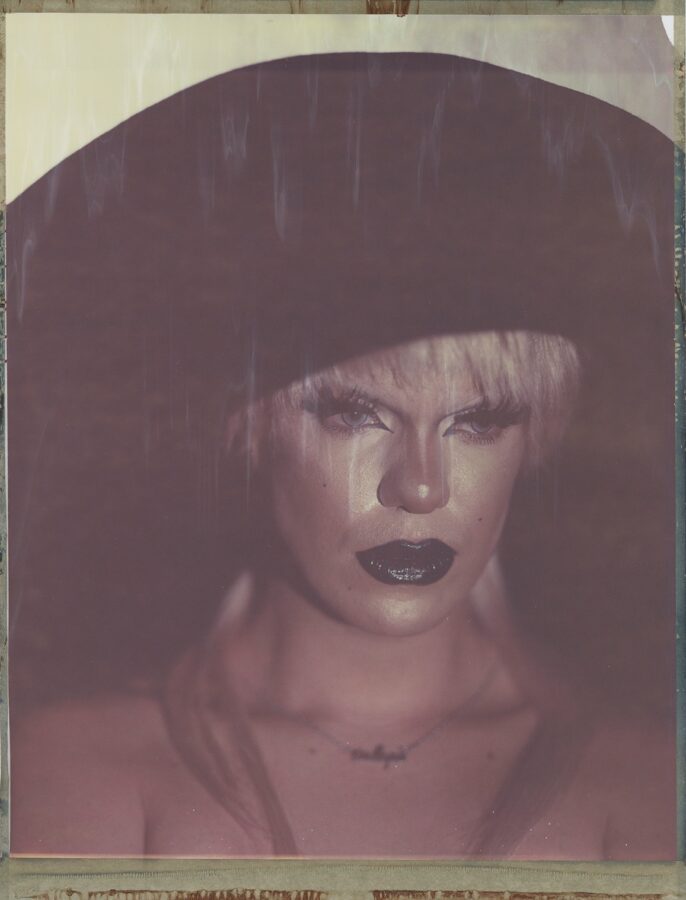
Maxi hat – Patou
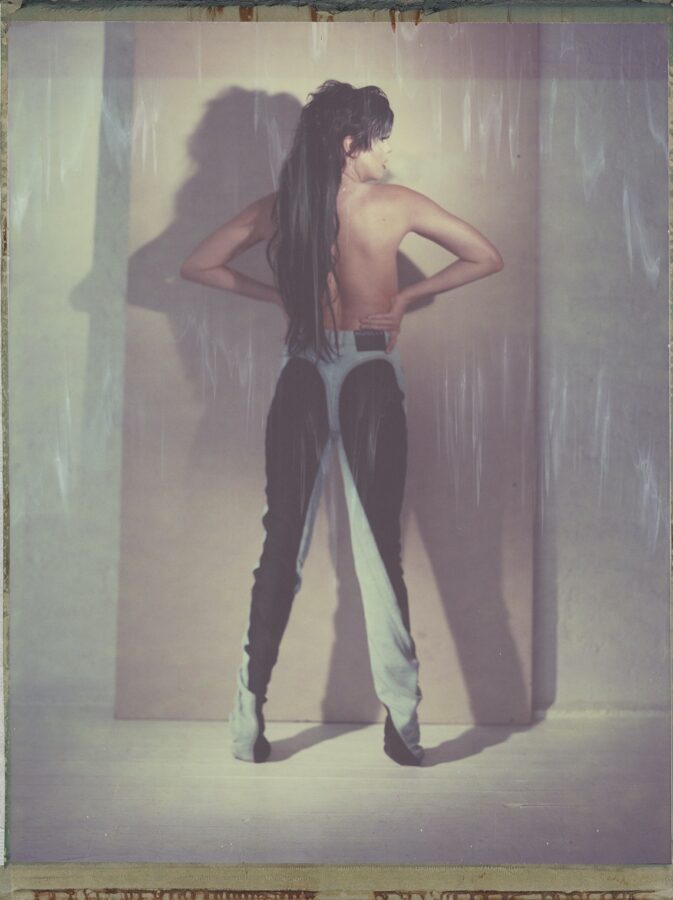
Pants – Mugler
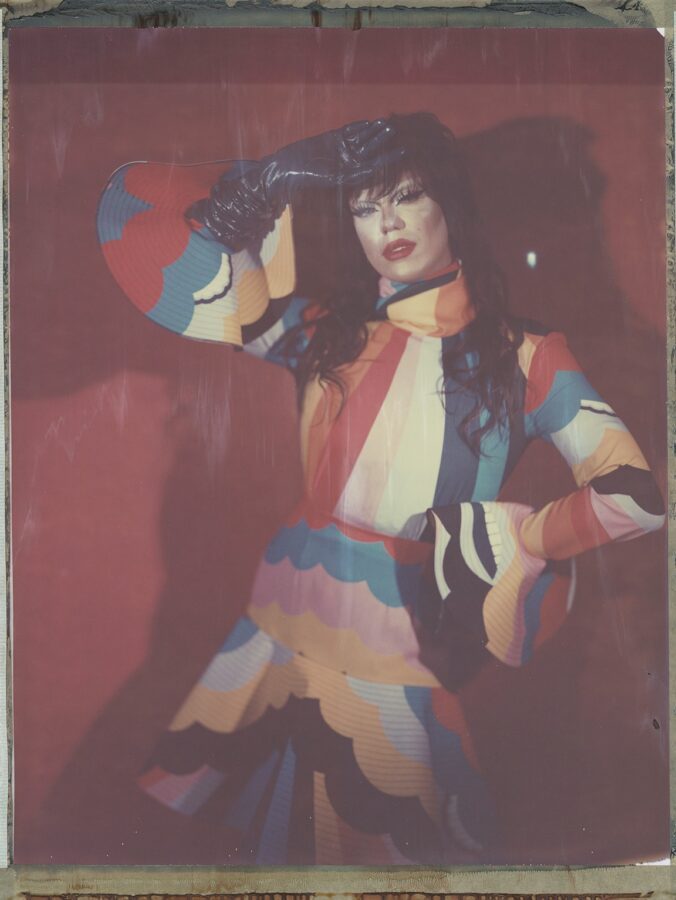
High neck mini dress – Patou
Photographer: Cameron Postforoosh
Stylist: Armelle Leturcq
Makeup: Karl Sanchez
Hair: Niko Weddle






